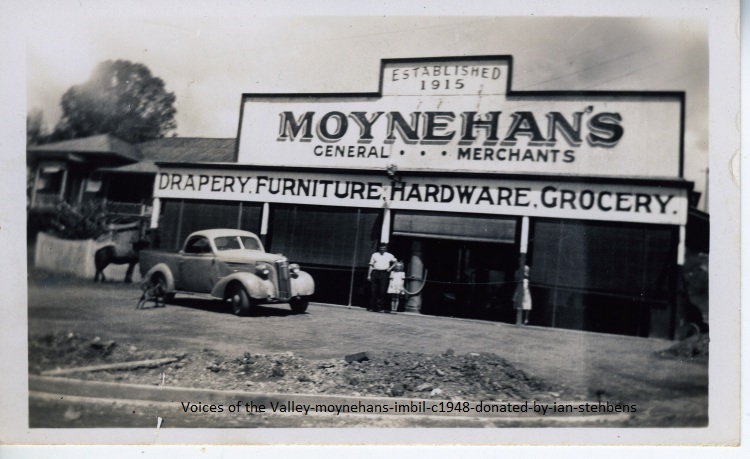
The early days of the Mary Valley
Until the arrival of the railway in 1914-1915, Dagun, Amamoor and Kandanga, existed only as scattered communities. Kandanga did have a small commercial centre nearby at Bunya Creek, but it was all to change with the arrival of the railway.
The railway terminus was at Brooloo which consisted of three sawmills and scattered farms, but a new era began when W.C. Anderson sub-divided part of his land into town allotments. With the arrival of the railway due the following year a township rapidly came into being. Despite being the railway terminus, Brooloo was quickly pushed from pre-eminence by nearby Imbil, thanks to the timber industry.
When Imbil Station was sub-divided and put up for auction in March 1914, eager buyers descended on the homestead to cast their bids. Within two years, Imbil had become a substantial town with numerous businesses serving the community.

Kandanga’s growth matched the pace set by its southern neighbour. Until 1911 the Union Church and the Cemetery, gazette in 1907, represented the future township of Kandanga. Although the commercial centre for the area was at Bunya Creek, with a general store, butcher, blacksmith, saddler and four sawmills in the area, J.E. Farrell had other ideas, opening his store close to the church in 1911. By 1912 it was confirmed the railway would pass above Bunya Creek, this announcement prompted Sidney Stephens to sub-divide part of his farm as town allotments. Twenty-six blocks were advertised, and even before the sale, a branch of the Royal Bank of Queensland had already opened its doors for business. Like Imbil it was initially timber which gave substance to Kandanga.
The land on which Amamoor now stands was originally owned by Thomas Busby, with most of the surrounding population engaged in the timber industry at Diamond Field just to the west. Forty town allotments were surveyed near the railway station in 1914.
Three years later benefits were shared with Dagun when William Henderson sub-divided his 6000-acre Amamoor Estate.
Sport has been a powerful element in community life right throughout the Mary River Valley. Sport, in its many forms, has acted as an outlet for the intense rivalry that developed between the various towns, and an important nurturing ground was in the schools which sprouted throughout the district.
This story was written by Wendy Flikweert and it appeared previously in the Kandanga Rag.
Sources: Trove; GFHS Research Collection; Voices of the Valley;
Recent Comments